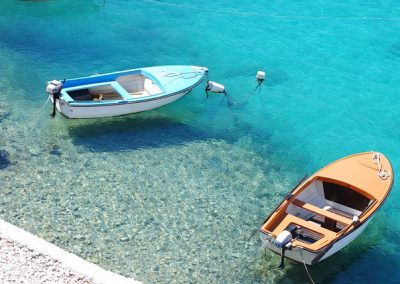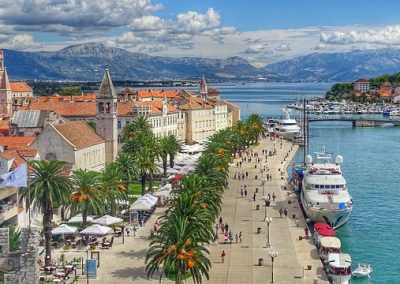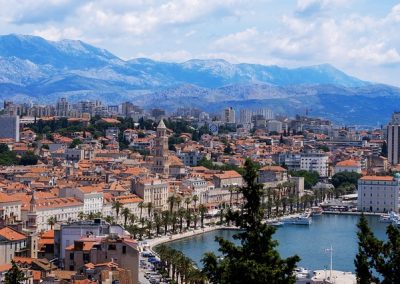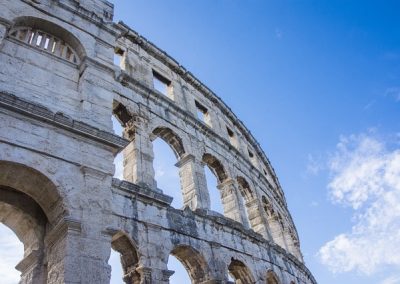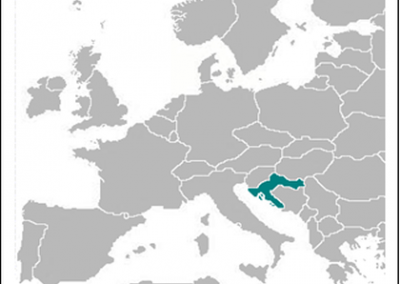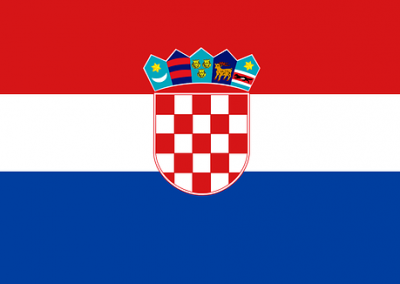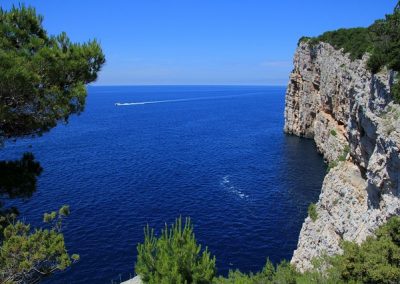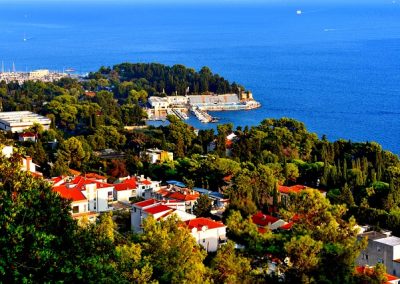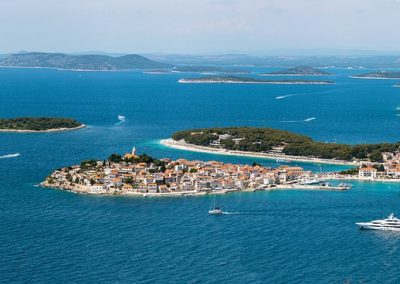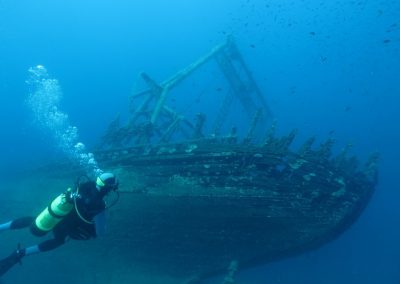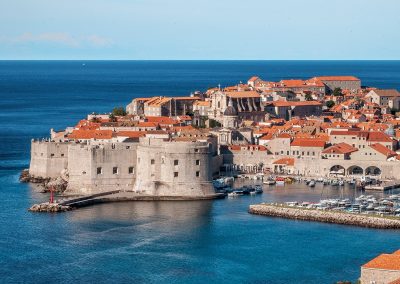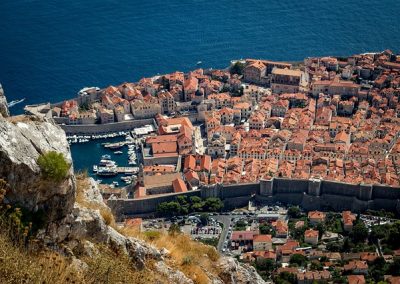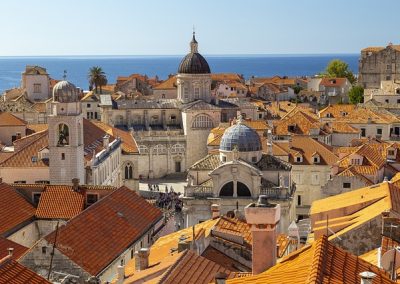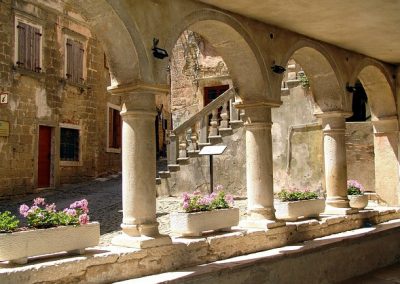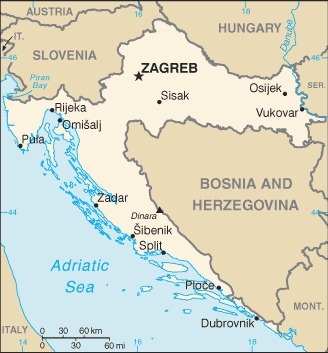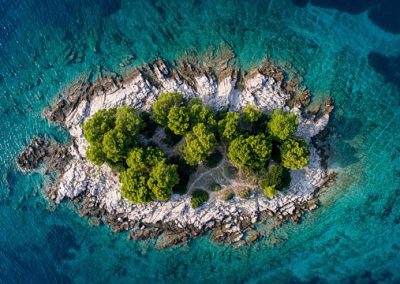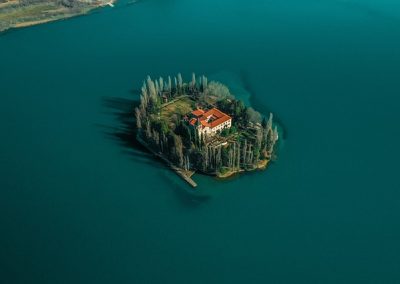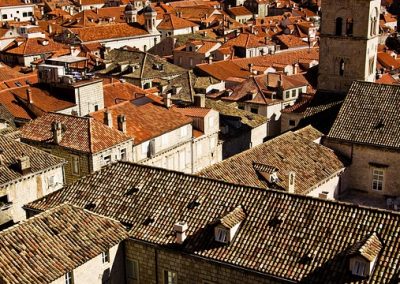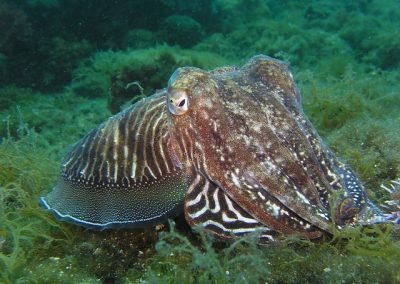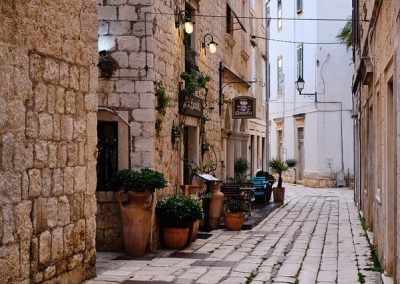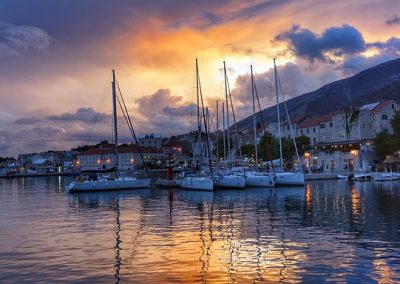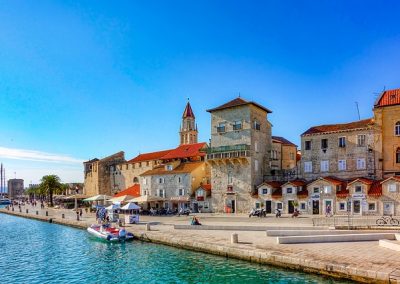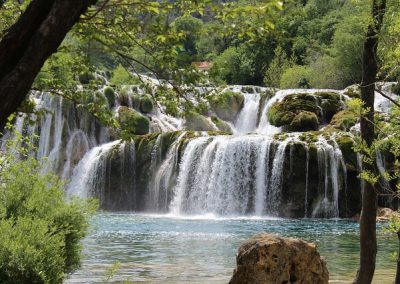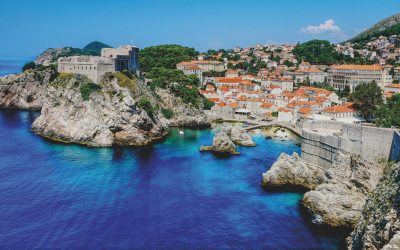Croatia (Republika Hrvatska (Republic of Croatia))
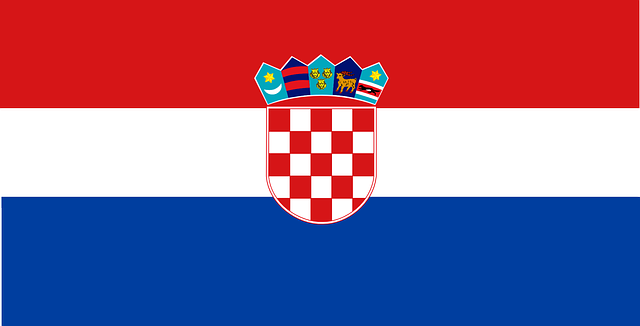
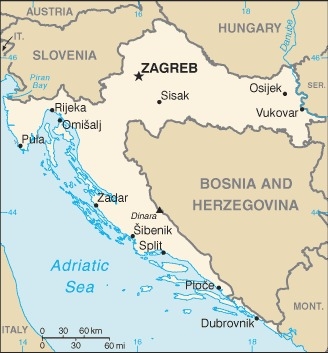
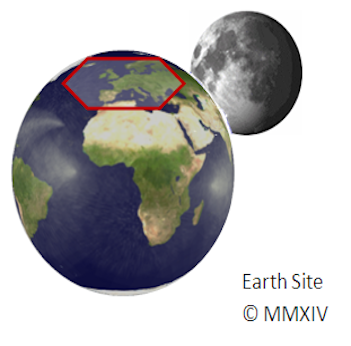
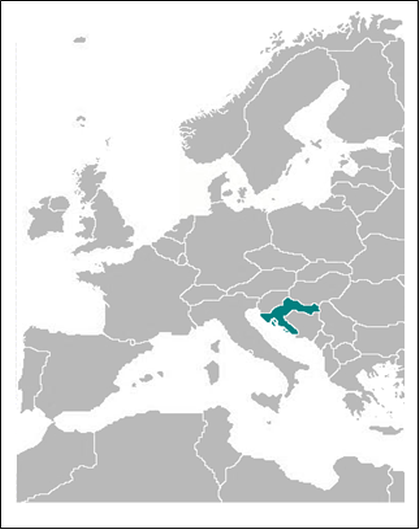
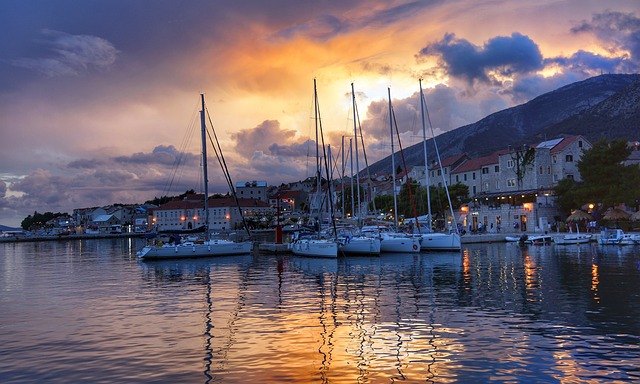
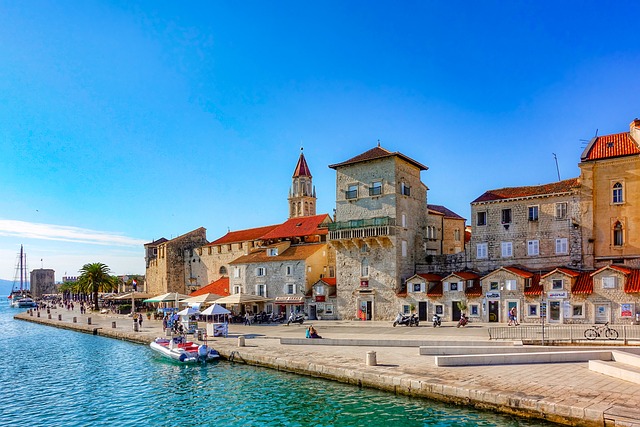
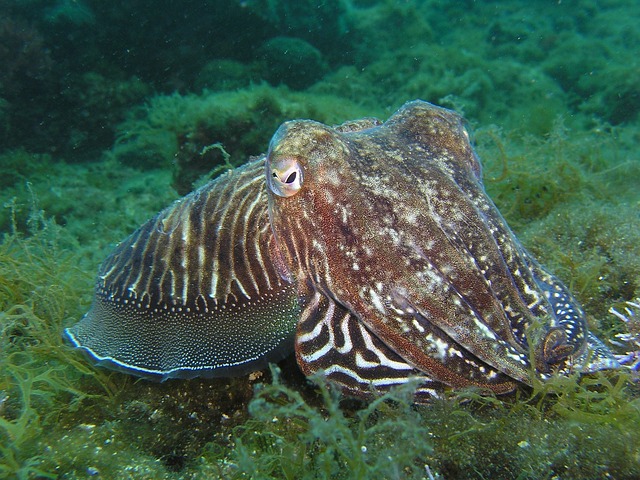
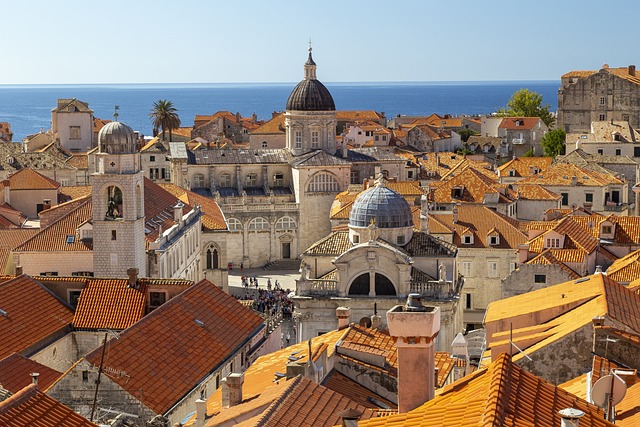
Capital: Zagreb
Population (Estimated July 2012): 4,480,043
Area: 56,954 km2 or 21,851 mi2
Currency: Kuna (Kn; plural Kune)
Official Language: Croatian
Political Information: Parliamentary Republic
Official Religion: No Official Religion (approximately 87.8% of the population are Roman Catholic, 4.4% are Orthadox, 1.3% are Muslim, 1.3% have other religious beliefs and 5.2% have no religious beliefs)
Highest Mountain: Dinara at 1,831m or 6,007ft
Time Zone (GMT/UTC): +1:00
Wildlife:
Counties/Provinces/States: 20 counties (zupanije, zupanija – singular) and 1 city* (grad – singular); Bjelovarsko-Bilogorska, Brodsko-Posavska, Dubrovacko-Neretvanska (Dubrovnik-Neretva), Istarska (Istria), Karlovacka, Koprivnicko-Krizevacka, Krapinsko-Zagorska, Licko-Senjska (Lika-Senj), Medimurska, Osjecko-Baranjska, Pozesko-Slavonska (Pozega-Slavonia), Primorsko-Goranska, Sibensko-Kninska, Sisacko-Moslavacka, Splitsko-Dalmatinska (Split-Dalmatia), Varazdinska, Viroviticko-Podravska, Vukovarsko-Srijemska, Zadarska, Zagreb*, Zagrebacka
Leaders: President is Ivo Josipović with Zoran Milanović as Prime Minister.
Croatia
Croatia, located in southeastern Europe, is a stunning country known for its beautiful landscapes, rich history, vibrant cities, and delicious cuisine. Situated on the eastern coast of the Adriatic Sea, Croatia shares borders with Slovenia, Hungary, Serbia, Bosnia and Herzegovina, and Montenegro. The country’s geography is diverse, with a mix of mountains, plains, and a stunning coastline that stretches over 1,100 miles.
Croatia has become an increasingly popular tourist destination in recent years, attracting visitors from all over the world. The country offers a wide range of attractions and activities for every type of traveller. From exploring ancient ruins and historical sites to relaxing on pristine beaches and indulging in delicious local cuisine, Croatia has something for everyone.
Croatia’s Rich History and Culture: From Ancient Times to Modern Day
Croatia has a rich and diverse history that dates back thousands of years. The region was inhabited by various tribes and civilizations throughout history, including the Illyrians, Romans, Byzantines, Venetians, Ottomans, and Austro-Hungarians. Each of these civilizations has left its mark on the country’s culture and architecture.
One of the most significant periods in Croatia’s history was during the Roman Empire when the region was known as Illyricum. Many Roman ruins can still be found throughout the country, including the impressive Diocletian’s Palace in Split. The palace is a UNESCO World Heritage Site and is one of the best-preserved Roman buildings in the world.
Croatia’s cultural heritage is also incredibly diverse. Traditional music and dance play an important role in Croatian culture, with various regional styles and instruments. The country is also known for its vibrant art scene, with many talented artists producing unique works inspired by Croatia’s natural beauty and rich history.
Exploring Croatia’s Stunning Natural Landscapes and National Parks
Croatia is blessed with an abundance of natural beauty, from its crystal-clear lakes and waterfalls to its lush forests and mountains. The country is home to several national parks, each offering a unique and breathtaking experience.
One of the most famous national parks in Croatia is Plitvice Lakes National Park. Located in central Croatia, the park is known for its cascading waterfalls, turquoise lakes, and lush vegetation. Visitors can explore the park on foot or by boat, taking in the stunning scenery and wildlife along the way.
Another must-visit national park is Krka National Park, located along the Krka River in southern Croatia. The park is famous for its series of waterfalls, including the iconic Skradinski Buk waterfall. Visitors can swim in the crystal-clear waters, hike along the park’s trails, or take a boat tour to explore the park’s many attractions.
The Adriatic Coastline: Croatia’s Best Beaches and Seaside Towns
Croatia’s coastline is one of the most beautiful in Europe, with crystal-clear waters, sandy beaches, and charming seaside towns. The country boasts over 1,000 islands, each offering its own unique charm and beauty.
One of the most famous beaches in Croatia is Zlatni Rat, located on the island of Brač. Known as the Golden Horn, this stunning beach stretches out into the sea and changes shape depending on the currents and winds. It is a popular spot for sunbathing, swimming, and water sports.
Hvar Island is another popular destination along Croatia’s coastline. Known for its vibrant nightlife and beautiful beaches, Hvar attracts visitors from all over the world. The island is also home to several historical sites, including a medieval fortress and a 16th-century cathedral.
Seaside towns such as Rovinj and Trogir are also worth a visit. Rovinj, located on the Istrian Peninsula, is known for its charming old town, colourful buildings, and beautiful beaches. Trogir, a UNESCO World Heritage Site, is famous for its well-preserved medieval architecture and stunning waterfront.
Discovering Croatia’s Delicious Cuisine: Traditional Dishes and Local Specialties
Croatian cuisine is a delightful blend of Mediterranean and Central European flavours, with an emphasis on fresh ingredients and simple yet delicious dishes. The country’s coastal regions are known for their seafood dishes, while the inland areas offer hearty meat dishes and traditional specialities.
Seafood lovers will be in heaven in Croatia, with an abundance of fresh fish, shellfish, and crustaceans available. Grilled fish, octopus salad, and black risotto made with cuttlefish ink are just a few of the delicious seafood dishes to try.
Meat lovers will also find plenty to enjoy in Croatia. Traditional dishes such as Ćevapi (grilled minced meat), Peka (slow-cooked meat and vegetables), and Sarma (cabbage rolls stuffed with meat) are popular throughout the country.
Croatia is also known for its local specialities, such as truffles and Pag cheese. Truffles are a delicacy found in Istria, and they are used to flavour various dishes, including pasta and risotto. Pag cheese is a unique sheep’s milk cheese produced on the island of Pag and is known for its distinct flavour.
Croatia’s Vibrant Cities: Zagreb, Split, Dubrovnik, and More
Croatia’s cities are a fascinating mix of history, culture, and modernity. Each city has its own unique charm and attractions that make it worth a visit.
The capital city of Zagreb is a vibrant metropolis with a rich history and a lively arts scene. Visitors can explore the city’s historic Upper Town, visit the beautiful St. Mark’s Church, and wander through the bustling Dolac Market. Zagreb is also known for its museums and galleries, including the Museum of Broken Relationships and the Museum of Contemporary Art.
Split, located on the Dalmatian Coast, is another must-visit city in Croatia. The city is famous for its stunning waterfront promenade, known as the Riva, and its well-preserved Roman ruins. The highlight of Split is Diocletian’s Palace, a UNESCO World Heritage Site that was built by the Roman Emperor Diocletian in the 4th century. Today, the palace is a bustling neighbourhood filled with shops, restaurants, and historical sites.
Dubrovnik, often referred to as the “Pearl of the Adriatic,” is one of Croatia’s most popular tourist destinations. The city’s Old Town is a UNESCO World Heritage Site and is known for its well-preserved medieval walls and stunning architecture. Visitors can walk along the city walls, visit historical sites such as the Rector’s Palace and the Franciscan Monastery, or simply relax on one of the city’s beautiful beaches.
Croatia’s Sports and Recreation: Hiking, Skiing, Sailing, and More
Croatia offers a wide range of outdoor activities for adventure enthusiasts. From hiking in the mountains to skiing in the winter and sailing along the coast, there is something for everyone to enjoy.
The country’s mountainous regions are perfect for hiking and exploring nature. The Velebit Mountain Range offers stunning views and challenging trails for experienced hikers. The Paklenica National Park is another popular hiking destination, with its rugged cliffs and deep canyons.
During the winter months, visitors can enjoy skiing and snowboarding in Croatia’s mountain resorts. The Platak Ski Resort near Rijeka and the Sljeme Ski Resort near Zagreb are popular choices for winter sports enthusiasts.
Croatia’s coastline is perfect for water sports such as sailing, kayaking, and windsurfing. The crystal-clear waters of the Adriatic Sea provide the perfect backdrop for these activities. Visitors can rent a boat or kayak and explore the hidden coves and secluded beaches along the coast.
Croatia’s Festivals and Events: Celebrating Music, Art, and Culture
Croatia is known for its vibrant festivals and events that celebrate music, art, and culture. From classical music concerts to film festivals and traditional dance performances, there is always something happening in Croatia.
The Dubrovnik Summer Festival is one of the country’s most famous cultural events. Held annually from July to August, the festival features a wide range of performances, including theatre, music, dance, and opera. The festival takes place in various venues throughout the city, including the historic Fort Lovrijenac and the Rector’s Palace.
The Zagreb Film Festival is another popular event in Croatia. Held in November, the festival showcases a selection of international and Croatian films. Visitors can attend screenings, meet filmmakers, and participate in workshops and discussions.
Traditional music and dance performances are also a highlight of Croatian culture. Many towns and cities host folk festivals throughout the year, where visitors can experience traditional music, dance, and costumes. These festivals are a great way to immerse yourself in Croatian culture and learn more about the country’s rich heritage.
Croatia’s Wine and Beer: Tasting the Best of the Local Brews
Croatia has a long tradition of winemaking and brewing, with a wide variety of wines and beers to choose from. The country’s diverse climate and fertile soil make it an ideal location for vineyards and breweries.
Croatian wines are gaining international recognition for their quality and unique flavours. The country produces a wide range of wines, from crisp white wines to full-bodied reds. Some of the most popular grape varieties include Plavac Mali, Malvazija, and Graševina. Visitors can visit local wineries and vineyards to taste the best of Croatian wines and learn about the winemaking process.
Beer lovers will also find plenty to enjoy in Croatia. The country has a growing craft beer scene, with many small breweries producing unique and flavorful beers. Ožujsko and Karlovačko are two of the most popular Croatian beer brands, known for their refreshing taste and high quality.
Planning Your Trip to Croatia: Tips and Recommendations for a Memorable Experience
When planning your trip to Croatia, there are a few things to keep in mind to ensure a memorable experience.
The best time to visit Croatia is during the spring (April to June) and autumn (September to October) when the weather is mild, and the crowds are smaller. The summer months (July and August) are the peak tourist season, with higher temperatures and larger crowds.
Getting around Croatia is relatively easy, with a well-developed transportation system. The country has an extensive network of buses and trains that connect major cities and towns. Renting a car is also a popular option for exploring the country at your own pace.
When it comes to accommodations, Croatia offers a wide range of options to suit every budget. From luxury hotels and resorts to budget-friendly guesthouses and apartments, there is something for everyone. It is recommended to book your accommodations in advance, especially during the peak tourist season.
As with any travel destination, it is important to stay safe while visiting Croatia. Be aware of your surroundings, especially in crowded areas, and take precautions to protect yourself and your belongings. It is also advisable to have travel insurance that covers medical expenses and trip cancellations.
In conclusion, Croatia is a beautiful country in Europe that offers a wide range of attractions and activities for every type of traveller. From its stunning natural landscapes and national parks to its vibrant cities, delicious cuisine, and rich history and culture, Croatia has something for everyone. Whether you are interested in exploring ancient ruins, relaxing on pristine beaches, or indulging in delicious local cuisine, Croatia is sure to leave you with unforgettable memories.
FAQs
What is Croatia?
Croatia is a country located in Southeast Europe. It is bordered by Slovenia, Hungary, Serbia, Bosnia and Herzegovina, and Montenegro. Its capital city is Zagreb.
What is the population of Croatia?
As of 2021, the estimated population of Croatia is around 4 million people.
What is the official language of Croatia?
The official language of Croatia is Croatian.
What is the currency of Croatia?
The currency of Croatia is the Croatian kuna (HRK).
What is the climate like in Croatia?
Croatia has a Mediterranean climate along the coast and a continental climate in the interior. Summers are hot and dry, while winters are mild and wet.
What are some popular tourist destinations in Croatia?
Some popular tourist destinations in Croatia include Dubrovnik, Split, Hvar, Plitvice Lakes National Park, and the Istrian Peninsula.
What is the religion of Croatia?
The majority of the population in Croatia is Roman Catholic.
What is the government system of Croatia?
Croatia is a parliamentary democracy with a president as the head of state and a prime minister as the head of government.
What is the economy of Croatia like?
Croatia has a mixed economy with a strong service sector, particularly in tourism. Other important industries include manufacturing, agriculture, and energy.
Climate Zones Of Croatia: Different Climate Regions Of Croatia
Croatia, located in Southeast Europe, is known for its stunning landscapes, diverse ecosystems, and rich cultural heritage. The country’s geography is characterized by a mix of coastal areas, mountains, and plains, which contribute to its varied climate zones. Understanding Croatia’s climate zones is crucial for various reasons, including agriculture, tourism, and overall sustainability. Summary Croatia has a diverse range of climate zones, including Mediterranean, Continental, Mountainous, Coastal, Sub-Mediterranean, and Transitional. The Mediterranean climate region is characterized by hot, dry summers and mild, wet winters. The Continental climate region experiences cold winters and hot summers, with significant temperature variations throughout the year. The Mountainous climate region has cooler temperatures and higher precipitation levels, with snowfall in the winter months. The Coastal climate region has mild winters and hot summers, with high humidity levels and occasional thunderstorms. The Sub-Mediterranean climate region has a mix of Mediterranean and Continental climates, with mild winters and hot summers. The Transitional climate region experiences a mix of Mediterranean and Continental climates, with significant temperature variations throughout the year. Climate variations within Croatia’s regions can impact agriculture and tourism, with some areas more suitable for certain crops or activities. Climate change may lead to changes in Croatia’s climate zones, with potential impacts on agriculture, tourism, and the environment. The Mediterranean Climate Region of Croatia The Mediterranean climate region in Croatia is characterized by hot, dry summers and mild, wet winters. This climate is influenced by the Adriatic Sea, which helps moderate temperatures and provides moisture. Regions such as Dalmatia and parts of Istria fall under this climate zone. In the Mediterranean climate region, you can find...
Political Boundaries of Croatia: Provinces, Districts, or Historical Boundaries.
Political boundaries are defined as the lines that separate one political entity from another. These boundaries are crucial in defining a country’s identity as they determine the extent of its territory and sovereignty. In the case of Croatia, political boundaries play a significant role in shaping its identity as a nation. Summary Croatia is divided into provinces and regions with distinct cultural and historical backgrounds. The country’s political boundaries have evolved over time, with influences from neighboring countries and empires. Political boundaries have played a significant role in shaping Croatia’s culture, society, and economic development. Croatia’s administrative divisions are organized into districts, which have varying levels of autonomy and decision-making power. Border disputes remain a challenge for Croatia, but the country’s political boundaries continue to shape its identity and future. Overview of Croatia’s Provinces and Regions Croatia is divided into 20 counties, which are further divided into municipalities and cities. Each county has its own unique characteristics and cultural heritage. The provinces and regions of Croatia have a rich history that dates back centuries. One of the most well-known provinces in Croatia is Istria, located in the northwest part of the country. Istria is known for its beautiful coastline, picturesque towns, and rich cultural heritage. It has a diverse population with influences from Italian, Slovenian, and Croatian cultures. Another important province is Dalmatia, which stretches along the Adriatic Sea. Dalmatia is famous for its stunning coastline, historic cities such as Split and Dubrovnik, and delicious seafood cuisine. It has a strong maritime tradition and is a popular tourist destination. Historical Boundaries of Croatia: A Brief Overview The historical boundaries...
Terrain and Topography of Croatia: mountains, valleys, and plains.
Croatia is a country known for its stunning natural beauty, and much of this can be attributed to its diverse topography. From towering mountain ranges to picturesque coastal mountains, Croatia offers a wide range of landscapes for visitors to explore. Understanding the geography of a destination is crucial before visiting, as it allows travellers to plan their activities and make the most of their time in the country. In this article, we will delve into the various regions and topography of Croatia, highlighting the unique features and activities that each area has to offer. Summary Croatia’s terrain and topography is diverse and varied, offering a range of landscapes to explore. From the mountain ranges of Velebit and Medvednica to the coastal mountains of Biokovo and Učka, Croatia has plenty of peaks to climb. The Cetina and Sava River Valleys offer a chance to explore Croatia’s lush greenery and natural beauty. The Karst landscape of Croatia is home to fascinating caves, sinkholes, and underground rivers waiting to be explored. The Dinaric Alps are Croatia’s most iconic mountain range, while the Pannonian Plain offers a unique flatland region to explore. Mountain Ranges in Croatia: From Velebit to Medvednica Croatia is home to several mountain ranges, each with its own distinct characteristics. One of the most notable mountain ranges is Velebit, which stretches along the Adriatic coast. Velebit is known for its rugged terrain and diverse flora and fauna. It is a popular destination for hikers and nature enthusiasts, with numerous trails that offer breathtaking views of the surrounding landscape. Another prominent mountain range in Croatia is Medvednica, located near the capital...
History of Croatia
Croatia, located in Southeast Europe, has a rich and diverse cultural heritage that has been shaped by its unique geographical location and historical events. Situated at the crossroads of Central Europe, the Mediterranean, and the Balkans, Croatia has been influenced by various civilizations throughout its history. This has resulted in a vibrant and diverse cultural landscape that is celebrated and cherished by its people. Croatia’s cultural heritage is a reflection of its complex history, which includes influences from the Illyrians, Greeks, Romans, Slavs, Ottomans, Habsburgs, and more. Each of these civilizations has left its mark on the country, contributing to its unique identity. From ancient ruins and medieval castles to traditional folk dances and music, Croatia’s cultural heritage is a testament to its rich history and the resilience of its people. Summary Croatia has a rich cultural heritage that spans thousands of years. Prehistoric settlements in Croatia date back to the Stone Age. Roman rule brought Christianity to Croatia, which became the dominant religion. The arrival of the Slavs led to the formation of the Croatian state. Croatia has a long history of struggle for independence, including during World War II and the breakup of Yugoslavia. Early settlements and prehistoric times in Croatia The history of Croatia dates back to prehistoric times when the region was inhabited by the Illyrians. The Illyrians were an ancient Indo-European people who settled in the Balkans around 2000 BC. They had a significant impact on Croatia’s culture, introducing elements such as pottery making, metalworking, and agriculture. During the Bronze and Iron Ages, Croatia saw the rise of fortified settlements and hillforts. These settlements...
Natural Resources of Croatia: Where Natural Resources are Located in Croatia
Croatia, located in Southeast Europe, is a country known for its stunning natural beauty. From its crystal-clear waters along the Adriatic coast to its lush forests and diverse wildlife, Croatia is blessed with a wide range of natural resources. These resources play a crucial role in the country’s economy, providing opportunities for tourism, agriculture, and energy production. However, they also face threats from human activities and climate change. In this article, we will explore Croatia’s natural resources in detail, their importance to the country, and the efforts being made to protect and conserve them. Summary Croatia has a diverse range of natural resources, including minerals, forests, water, agriculture, and renewable energy potential. The country is rich in mineral resources, including bauxite, coal, and oil, but these industries have declined in recent years. Croatia’s forests cover over 2 million hectares and are an important source of timber and biodiversity. The country has abundant water resources, including rivers, lakes, and groundwater, which are used for drinking, irrigation, and hydropower. Agriculture is a significant sector in Croatia, with fertile land and a variety of crops, including grapes, olives, and lavender. Croatia has potential for renewable energy, particularly in wind and solar power, but development has been slow due to regulatory and financial barriers. Natural resources play an important role in Croatia’s economy, contributing to industries such as tourism, manufacturing, and energy. Threats to Croatia’s natural resources include pollution, climate change, and unsustainable practices such as overfishing and deforestation. Conservation efforts are underway to protect Croatia’s natural resources, including national parks, protected areas, and sustainable management practices. The future prospects for Croatia’s natural...
History of Croatia
Croatia, located in Southeast Europe, has a rich and complex history that spans thousands of years. From its early settlements to its modern-day status as a member of the European Union, understanding Croatia’s past is crucial in comprehending its present. This article will provide a comprehensive overview of Croatia’s history, highlighting key events and periods that have shaped the country. Summary Croatia’s early settlements date back to the Neolithic period, with evidence of human presence found in the Danube basin and on the Adriatic coast. The arrival of the Croats in the 7th century marked the beginning of the Croatian state, with the establishment of the Duchy of Croatia under Tomislav in the 10th century. The Kingdom of Croatia in the Middle Ages saw the country’s expansion and cultural development, with the introduction of Christianity and the Glagolitic script. The Ottoman Empire and the Habsburg Monarchy had a significant impact on Croatia’s history, with the country being divided and ruled by different powers for centuries. The rise of nationalism in the 19th century led to the formation of the Illyrian Movement and the Croatian National Revival, which aimed to promote Croatian language and culture. World War I and the formation of Yugoslavia brought Croatia under a new state, which was initially seen as a positive development but later led to tensions and conflicts. World War II and the Independent State of Croatia were marked by atrocities committed against minorities, including Jews, Serbs, and Roma. Tito’s Yugoslavia and the Croatian Spring saw some liberalization and decentralization, but also repression of dissent and nationalism. The Croatian War of Independence in the...
Population Density of Croatia
Croatia, located in Southeast Europe, has a population density of approximately 73 people per square kilometer. While this may seem relatively low compared to other European countries, it is important to understand the factors influencing population density in order to make informed policy decisions. Population density refers to the number of people living in a specific area, and it is influenced by a variety of social, economic, and environmental factors. By understanding these factors, policymakers can better plan for the needs of the population and allocate resources accordingly. Summary Croatia has a population density of 73 people per square kilometer. Factors influencing population density in Croatia include historical events, economic development, and environmental factors. Population density varies greatly across Croatia, with coastal regions being more densely populated than inland areas. Urbanization has led to an increase in population density in Croatia, particularly in major cities like Zagreb and Split. Demographic changes, such as an aging population and declining birth rates, will have significant implications for Croatia’s population density and infrastructure in the future. Understanding the Factors Influencing Population Density in Croatia Population density is determined by a combination of factors, including birth rates, death rates, migration patterns, and urbanization. In the case of Croatia, these factors have contributed to its current population density. Birth rates have been declining in recent years, leading to a slower population growth rate. Additionally, death rates have been increasing due to an aging population. Migration patterns also play a role in population density, as people move from rural areas to urban centers in search of better job opportunities and amenities. Historical Overview of Croatia’s...
Cultural or Historical Sites of Croatia: Important Cultural Landmarks or Historical Sites in Croatia
Introduction Croatia is a country with a rich history and cultural heritage that spans centuries. From its ancient Roman ruins to its medieval walled cities, Croatia is home to numerous landmarks and attractions that showcase its unique heritage. It is important to preserve and promote these sites, as they not only serve as reminders of Croatia’s past, but also contribute to its tourism industry and economy. By protecting and showcasing these treasures, Croatia can continue to attract visitors from around the world and ensure that future generations can appreciate its rich history. The Walled City of Dubrovnik: A UNESCO World Heritage Site One of Croatia’s most famous landmarks is the Walled City of Dubrovnik, which is a UNESCO World Heritage Site. The walls of Dubrovnik have a long and storied history, dating back to the 13th century. They were built to protect the city from invasions and have since become an iconic symbol of Dubrovnik. Today, visitors can explore the city’s narrow streets and stunning architecture within the walls. Within the walls of Dubrovnik, there are several must-see attractions. One of these is the Rector’s Palace, which was the seat of power for the Republic of Ragusa. The palace features beautiful Gothic and Renaissance architecture, as well as a museum that showcases the history of Dubrovnik. Another notable attraction is the Cathedral of the Assumption, which dates back to the 7th century. The cathedral is known for its stunning Baroque interior and houses relics of Saint Blaise, the patron saint of Dubrovnik. Diocletian’s Palace: A Roman Emperor’s Legacy in Split Located in the city of Split, Diocletian’s Palace is...
Discovering the Charm of Croatia: A Journey through its Stunning Landscapes and Rich Culture
Croatia, located in Southeast Europe, is a country known for its stunning natural beauty, rich history, and vibrant culture. With a diverse landscape that includes a breathtaking coastline along the Adriatic Sea, picturesque islands, lush national parks, and charming towns and cities, Croatia offers something for every type of traveler. The history of Croatia dates back thousands of years, with influences from various civilizations including the Romans, Byzantines, Venetians, and Austro-Hungarians. This rich history is evident in the country’s architecture, traditions, and cultural heritage. Summary Croatia is a land of beauty and culture, with a rich history and warm hospitality. The Adriatic coastline is a must-see, with dazzling beaches and islands to explore. Plitvice Lakes National Park is a natural wonder, with enchanting waterfalls and lakes. Dubrovnik is a magnificent city, a UNESCO World Heritage Site with stunning architecture. Split is a blend of ancient and modern culture, with a historic city center and vibrant nightlife. The Dazzling Adriatic Coastline: Exploring Croatia’s Beaches and Islands One of the main attractions of Croatia is its stunning coastline along the Adriatic Sea. Stretching over 1,100 miles, the coastline is dotted with beautiful beaches, crystal-clear waters, and charming coastal towns. Some of the most popular beaches in Croatia include Zlatni Rat in Bol, which is known for its unique shape and turquoise waters; Stiniva Beach on the island of Vis, which is hidden between towering cliffs; and Punta Rata Beach in Brela, which has been voted one of the most beautiful beaches in Europe. In addition to the beaches, Croatia is also home to over a thousand islands. The most famous among...
